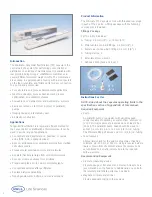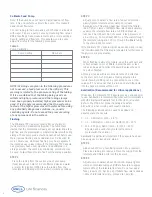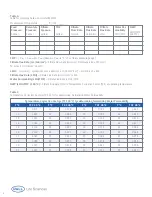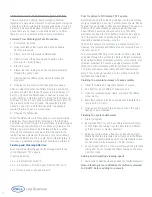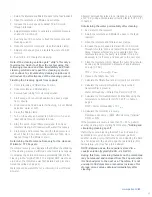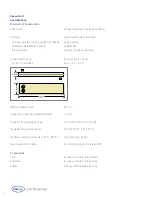
STEP 3
Circulate the sanitizing solution for about 45 minutes
to 1 hour.
STEP 4
Flush out the sanitizing solution with water. Follow the
flushing procedure given above.
Normalized Water Permeability (NWP) (Optional)
This procedure is strongly recommended if the Minimate TFF
Capsule will be reused. The water permeability (filtrate flow
rate per unit of applied pressure) is a measure of performance
of the “original” clean membrane. The effectiveness of the
cleaning protocol, i.e. membrane recovery, can be evaluated
by comparing the NWP of the membrane after cleaning to
the “original” NWP.
NWP (after Cleaning)
Membrane recovery = ---------------------------------------------- X 100%
NWP (Original)
The procedures for determining NWP is given in Appendix A
System Hold-up Volume (Optional)
The
System Hold-Up Volume
is the total volume contained
within the feed/retentate flow path of the TFF system.
Most of this volume is recoverable. The
Minimum Working
Volume
is the system hold-up volume plus a minimum
volume of liquid that must remain in the bottom of the feed
reservoir at the operating flow rate in order to prevent air
from being drawn into the cassette system. Increasing the
cross flow rate, increases the volume of product required in
the bottom of the feed reservoir, in order to prevent air from
getting drawn into the pump. The minimum working volume
limits the maximum concentration factor achievable.
Knowing the minimum working volume, you can calculate
the minimum starting volume required to achieve a desired
concentration factor.
Minimum
Minimum
Concentration
Starting =
Working x
Factor
Volume Volume
If the actual starting volume is less than this value it will not
be possible to reach the concentration factor.
Reservoir design significantly affects the minimum volume
required to prevent air from getting into the system. The
Minim System 500mL reservoir was especially designed to
minimize the working volume in the system.
See Appendix A for a procedure to determine the minimum
working volume.
Integrity Test (Optional)
An integrity test is performed to identify any gross defects
in the device membrane or seals that could cause product
loss prior to use. Capsules are 100% integrity tested after
manufacturing. Therefore it is not necessary to perform an
integrity test on a new Minimate TFF Capsule. However,
for critical applications or if the capsule will be reused, it is
recommended that an integrity test be performed to confirm
integrity both before and after use.
Several procedures for performing an integrity test
(qualitative and quantitative) are given in Appendix A.
Buffer-Conditioning (Optional)
The buffer-conditioning step is used to precondition the
Minimate
™
TFF Capsule into the sample buffer (equilibrating
solution) before the sample is added. This adjusts the pH
and prevents the sample from being diluted with water, which
may lower the ionic strength and possibly cause precipitation
of product or other sample components. It is also used to
remove air bubbles from the system and equilibrate the
system components and fluid to operating temperature.
STEP 1
Add about 100mL of buffer solution into the reservoir.
Place feed tubing into reservoir. Place the tubing from the
retentate and filtrate port(s) into the reservoir.
STEP 2
Adjust pump to deliver about 50mL/min. Slowly tighten
clamp on retentate tubing until filtrate flow rate is
approximately 25% of the retentate flow rate. If filtrate flow
rate is already >25% of retentate flow rate, proceed to
next step. Do not exceed a feed pressure of 2 bar (30psi).
STEP 3
Circulate the buffer solution for 5-10 minutes.
STEP 4
Place the tubing from the retentate into a drain. Slowly
start the pump and run until the liquid in the reservoir just
reaches the bottom. DO NOT ALLOW AIR TO BE DRAWN
INTO THE TUBING.
Concentration/Diafiltration
Refer to the following application notes:
Introduction to Tangential Flow Filtration for Laboratory and
Process Development Applications, PN33213
Diafiltration: A Fast, Efficient Method for Desalting or Buffer
Exchange of Biological Samples, SD1599
A TFF Process Data Sheet is included at the end of
the Appendix B for use in recording experimental
conditions.
www.pall.com/lab
5


